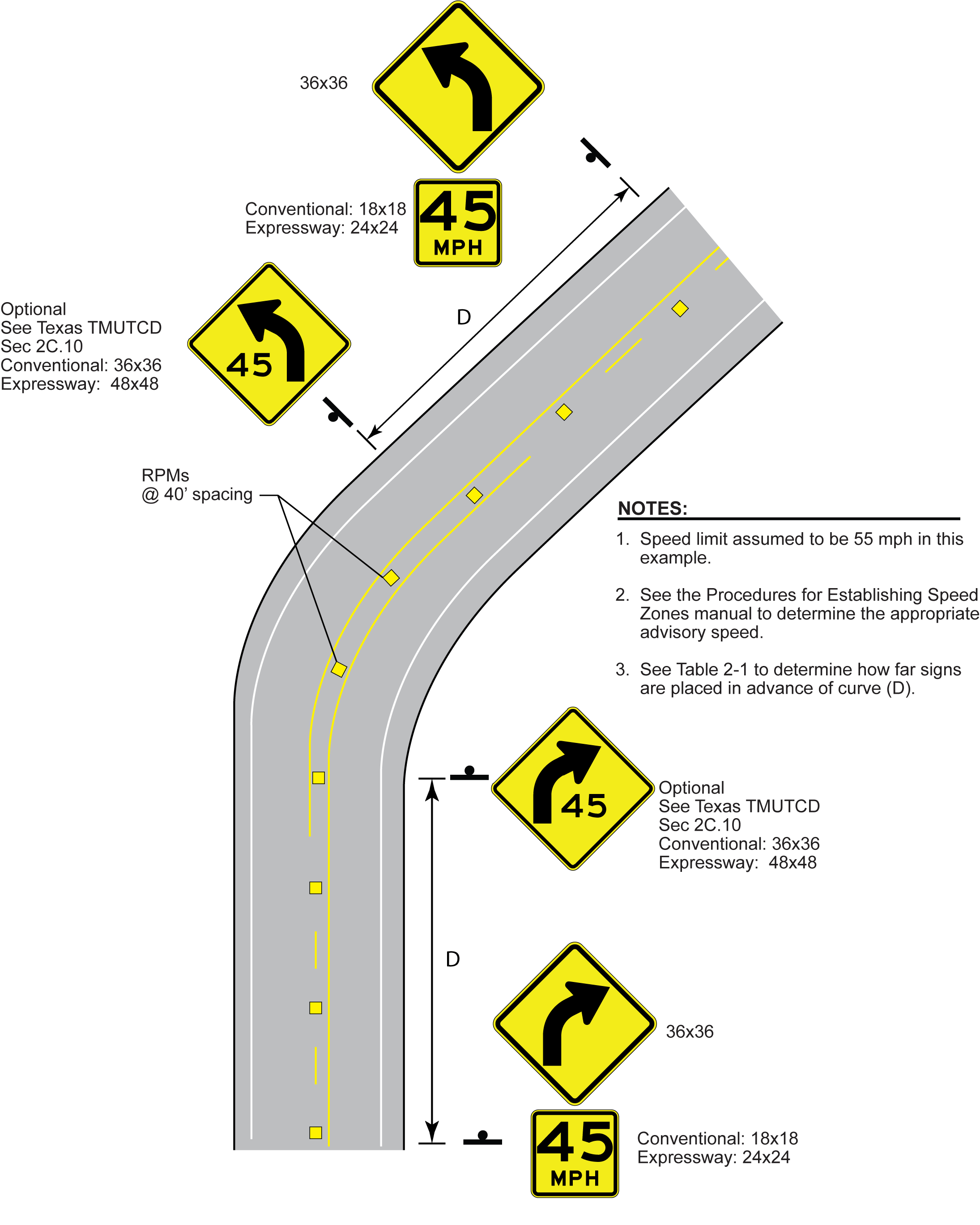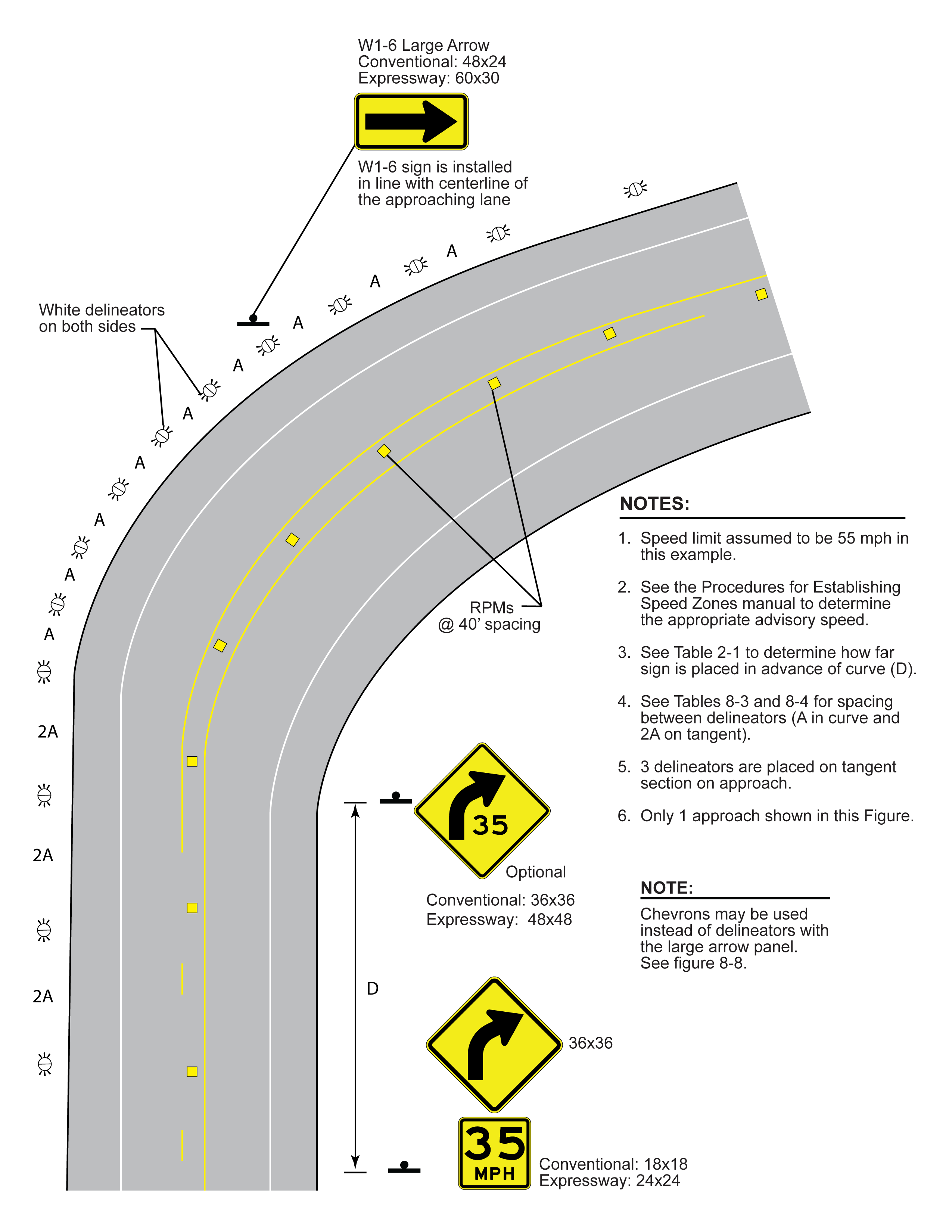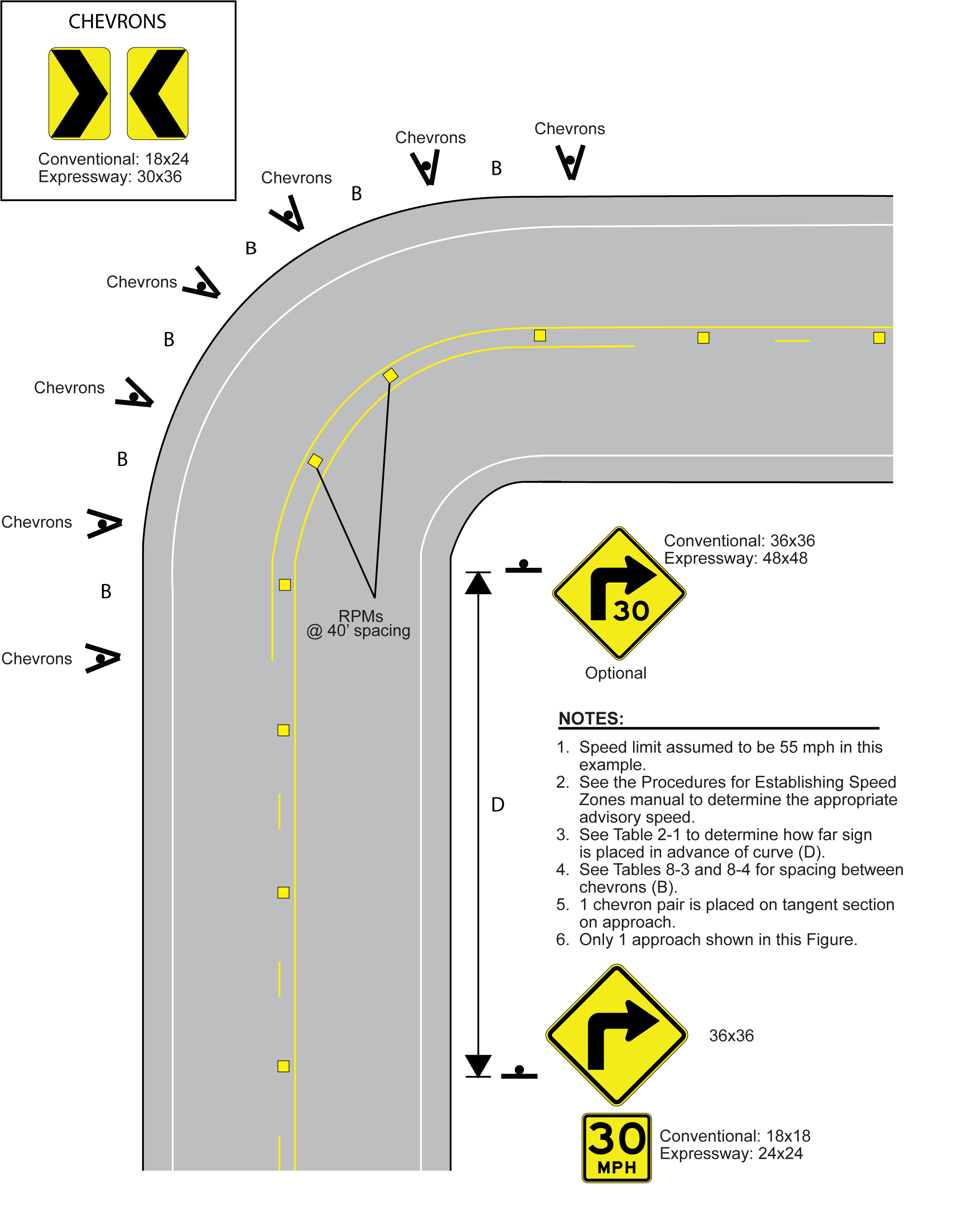Use of Delineators and Chevrons in Curves
When determining if or whether delineators or chevrons are needed in curves, the posted speed limit and advisory speed limit for the curve are used. Table 8-2 shows the recommended devices to be used based upon the difference between the posted speed and advisory speed.
USE OF WARNING DEVICES AT CURVES WITH ADVISORY SPEED LIMITS | |
|---|---|
Amount by Which Advisory Speed is Less Than Posted Speed | Warning Devices Needed |
5 MPH & 10 MPH | RPMs |
15 MPH & 20 MPH | RPMs, Delineators and Large Arrow (W1-6) or RPMs and Chevrons |
25 MPH & Greater | RPMs and Chevrons |
Figures 8-6 through 8-8 illustrate the three scenarios shown in Table 8-2 for two-lane two-way roadways. In each figure, all required markings and signing are shown, as well as any optional signing. A W1-1 right angle curve or W1-2 curve warning sign is placed on the approach with the appropriate advisory speed plaque in each scenario. A supplementary W1-1a or W1-2a sign may also be installed at the beginning of the curve, but may not be used in place of the approach W1-1 or W1-2 sign. Any curve with an advisory speed of 30 mph or less requires the use of the W1-1 sign instead of the W1-2 sign. Other curve signs may be used depending on roadway geometries.

Figure 8-5.
Curve Signs and Chevrons

Figure 8-6.
Curve Treatments when Advisory Speed is 5-10 mph Below Posted Speed

Figure 8-7. Curve Treatments when Advisory Speed is 15-20 mph Below Posted Speed

Figure 8-8.
Curve Treatments when Advisory Speed is 25 mph or More Below Posted Speed